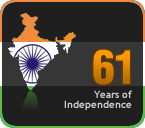అనగా అనగా..........
Once there was, a city called Kunthala Nagaram. King Gopala Varma was ruling it. Golaharudu was his Minister. There was a village, nearby Kunthala Nagaram, named as Mathangi puram.
In that village, there was a thief by name Karthi Keya. He had four sons. He put their names as Full thief, Three quarter thief, Half thief and Quarter thief respectively.
One day, early in the morning he called his fourth son, quarter thief and said, “Look my son! I want to know your capacity in doing theft. Show your robbered wealth to me before sunset of this day.”
Quarter thief had taken leave from his father Karthikeya and reached Kunthala Nagaram. He approached a barber shop. By that time, the barber was shaving a customer. Quarter thief asked him “I want to have a shave. How much that you charge for that service.” The barber replied “Anna! [That means six paisa]. Quarter thief said, “I have in urgency. If you shave me immediately, I will pay you Pavala [i.e. 25 paisa]”. The barber requested his customer to whom he done half shave to wait for few minutes as “This man is paying me 25 paisa to immediate shave, please wait for few minutes. I do shave to this man and then I’ll complete yours.” The customer agreed.
The barber had done nice shave to Quarter thief. Quarter thief asked, “Do you have change for rupee?” the barber said “No sir”. Then Quarter thief said “Well! Come with me to market road. I’ll get change to give you Pavala.”
When the barber got ready to go with him, the customer who was waiting with half shave stopped him as “Hai! Barber! You made me to wait. And now you are leaving me with half shave. Complete my shave and go.”
The barber worried. Quarter thief said, “Why are you worrying? Send somebody with me to collect money.” By watching the barber’s son who was playing in front of the saloon, he continued, “Is he your son? Send this boy with me. I’ll keep money in his dress and send.”
The barber agreed. He asked his son to go along with Quarter thief to bring money. Quarter thief straightly went to a posh cloth shop. By watching his appearance the shop keeper thought that he might be a rich customer and received him with great respect. He asked the cloth shopkeeper to show costly saris: by keeping the barber’s son in his lap. The cloth businessman had shown costly silk saris. Quarter thief selected around 30 saris of each costly 2000 to 3000 varahas. In those days, that much money means it is huge amount. He said with the shopkeeper, “Our family women are in choultry room. You know about the women nature in case of sari selections. I take these saris to show them to select. I will return the remaining saris and I pay for the selected saris. You send somebody with me.”
Because that time was very rush time, so the business man was in trouble to send the sales man with him. Then Quarter thief said “Okay! Keep my son here. I’ll come back within half an hour.” The shop keeper accepted his deal.
Quarter thief took the packet of costly saris and left the shop. By another way, he reached his house and shown, the thiefted things to his father Karthikeya. He felt happy.
In the Kunthala Nagaram, the barber waited for his son and the cloth shop owner waited for his customer. After an hour, the shop keeper asked the barber’s son “Where is your father.” The innocent boy said “He is in the barber saloon.” The cloth business man worried and asked his fallow men to tie the boy’s hands and legs with rope. The poor boy frightened and started to cry with loud voice. Mean time, the worried barber came to the market road in search of his son. When he watched his son in cloth shop, he shouted “Hai! Why you are beating my son?” The shop man said “Oh! You are the co-fellow of the thief. Did you plan, one of you to theft the costly saris by keeping a boy here as security mortgage, and then the other person will come to take out the boy? I won’t leave you both. Pay my bill and go. Otherwise I’ll beat you.”
Such that the quarrel started and the barber and cloth business man were beating each other and shouting at each other. People gathered there to watch, intimation gone to king’s soldiers. They took both the men, along with the boy to the king’s court.
After enquiring in detail, the king, and the minister could understand the cheat and theft. The king said “Both of you got cheated. Without enquiring whether your customer is the father of this boy or not, you had given costly saris to the thief. It is your mistake. Go and do your business with care.”
Both the barber and cloth business man left the court. The king ordered “At day time, in busy market road, a thief succeeded to cheat people and to theft the things. It is ashamed of Kothwal of the city. [Kothwal means police commissioner of city] Within 24 hours, Mr. Kothwal, you have to find out the thief. The thief should be in prison.”
THE STORY TOLD BY MOUNA BHASHINI’S PAYYEDA,
16 years ago




